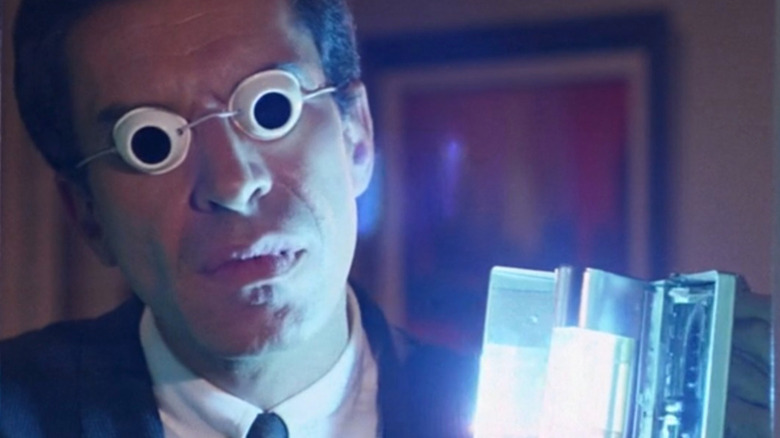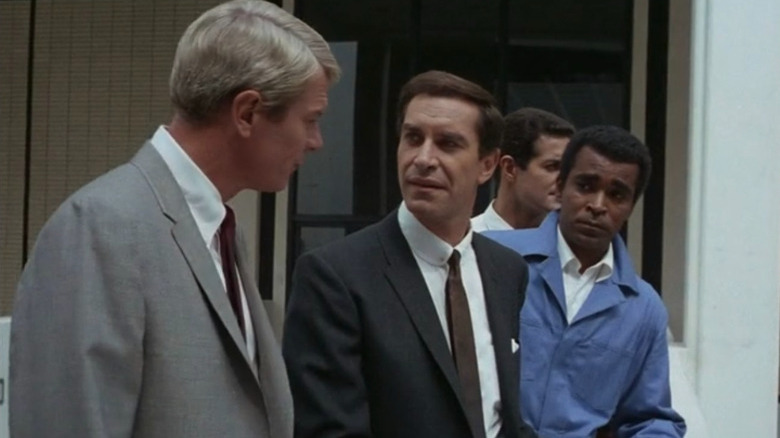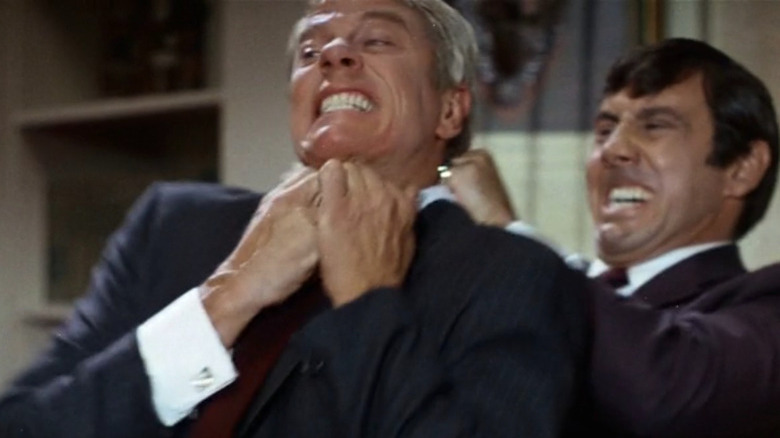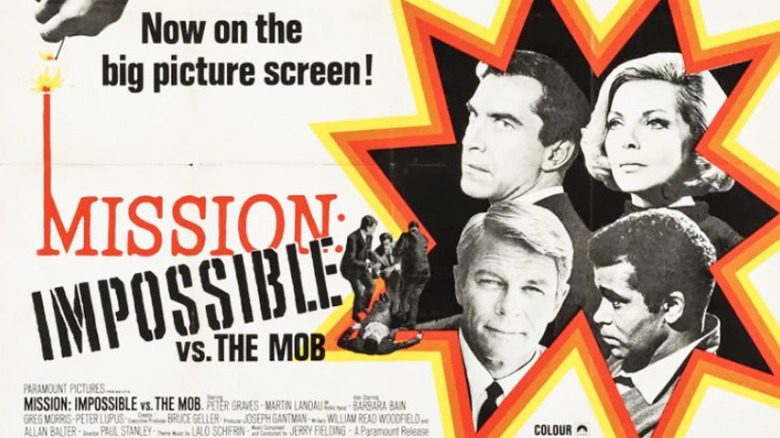There's A Mission: Impossible Movie Without Tom Cruise And Nobody Talks About It
In the last quarter century "Mission: Impossible" has become one of the biggest blockbuster motion picture franchises in the world. These tales of super spies, led by Tom Cruise's daredevil hero Ethan Hunt, dazzle audiences with suspenseful espionage stories and death-defying stunts. But there's something unusual about the "Mission: Impossible" series, alone against the modern backdrop of nostalgia-driven commercial enterprises.
"Mission: Impossible" isn't an original intellectual property. That's not the distinctive part: like the successful "Transformers" and "Star Trek" movies, "Mission: Impossible" is based on a popular TV series. What's different is that "Mission: Impossible" doesn't call attention to itself as a nostalgia entity, and as such, it hasn't led to a boost in visibility for the original shows. It's all about driving forward, not so much looking back.
It's been that way ever since Brian De Palma's "Mission: Impossible," which all the way back in 1996 adapted the TV series by blowing it to shreds, killing almost everyone in the team, making a brand new character the hero of the film franchise, and turning the hero from the original TV show, Jim Phelps, into the villain.
Nowadays it's hard to imagine any adaptation of any nostalgia property not only getting away with that, but also being so successful that nobody cares. You don't see too many angry YouTube videos about how the "Mission: Impossible" movies are betraying the fandom, for example. Instead, the focus is entirely on the new movies. The original "Mission: Impossible" is still available on home video, but still pushed under the rug.
So it's incredibly ironic that, in their zeal to support the "Mission: Impossible" movies, instead of the history of the series, an entire "Mission: Impossible" movie has been almost completely forgotten.
Hello, Mr. Phelps
"Mission: Impossible" debuted on CBS in 1966 and was, by all accounts, a big success. The spy series placed an emphasis not on the characters and their personal lives but on their many, elaborate missions, which featured tech-like lifelike face masks and self-destructing messages, which were so iconic that even the blockbuster Tom Cruise movies still rely on them. The series won multiple Emmy Awards, including two for Best Dramatic Series and two for its star Barbara Bain. The series lasted a staggering 171 episodes and was rebooted with original series star Peter Graves in 1988 for two seasons.
Indeed, "Mission: Impossible" was such a success that they made a movie out of it in the 1960s. But to be clear, I mean they literally made a movie out of it. Instead of adapting it to the big screen with different actors — a la the two "Doctor Who" feature films starring Peter Cushing — or making a feature-length adventure with the TV cast on a bigger scale — a la "Batman: The Movie" in 1966 — the decision was made to take a two-part episode of "Mission: Impossible" and edit the two halves together into a standalone feature.
The result was a film called "Mission: Impossible vs. The Mob."
Your mission...
"Mission: Impossible vs. The Mob" finds IMF agent Jim Phelps (Graves) leading a high-stakes mission to dismantle the mafia, after a powerful new leader makes them a major economic force. He enlists his usual team members — master thespians Rollin Hand (Martin Landau) and Cinnamon Carter (Barbara Bain), electronics expert Barney Collier (Greg Morris), and muscle man Willy Armitage (Peter Lupus) — to concoct an incredibly elaborate plan to take them down my manipulating newspapers. The goal was to trick the mob into killing their own men, digging up their victims and reviving them, and eventually replacing the mob boss with Rollin Hand (wearing an elaborate face mask) in a subplot that goes into some pretty tricky and interesting places.
By modern "Misson: Impossible" standards, "Mission Impossible vs. The Mob" is more of a serious spy thriller than an action-packed escapist fantasy. There are no acrobatics, there are no car chases, and the IMF agents only use guns to shoot each other with blanks and fake their own deaths. It's high-end television from the 1960s but it's not going to blow anyone away with its spectacle. Instead, the film relies on an incredibly tight screenplay and a series of suspense sequences involving life-or-death timing and deadly deception.
Should you choose to accept it...
"Mission: Impossible vs. The Mob" wasn't released in theaters in America. Instead, the two-parter-turned-movie was released theatrically in Europe and Australia. This was a fairly common practice at the time. It also happened to the hit spy series "The Man from U.N.C.L.E.", which had multiple two-part episodes released as standalone features in Europe, with titles like "To Trap a Spy," "How to Steal the World," and "The Karate Killers."
So the question of whether or not "Mission: Impossible vs. The Mob" actually counts as the first film in the series is a little debatable, but unless you place value judgments on it, the fact is undeniable: There was a "Mission: Impossible" movie in theaters, released only five years after Tom Cruise was born. And while it's not available as a standalone movie, you can watch both episodes of "The Council" on streaming back-to-back and see it for yourself.
And you really should. The "Mission: Impossible" movies may have largely erased the original series from the public consciousness but it was a tense and exciting television series. It makes perfect sense that it would spawn a blockbuster film series, even if the Tom Cruise movies gradually led the tone further away from intimate spy thrills and into James Bond extravaganza territory.



